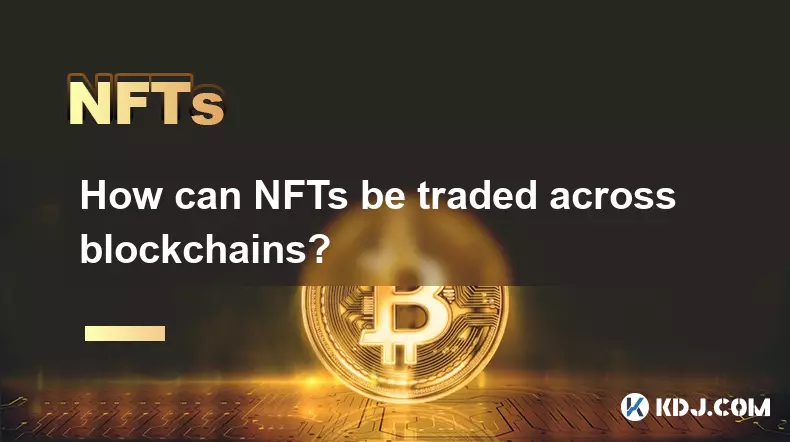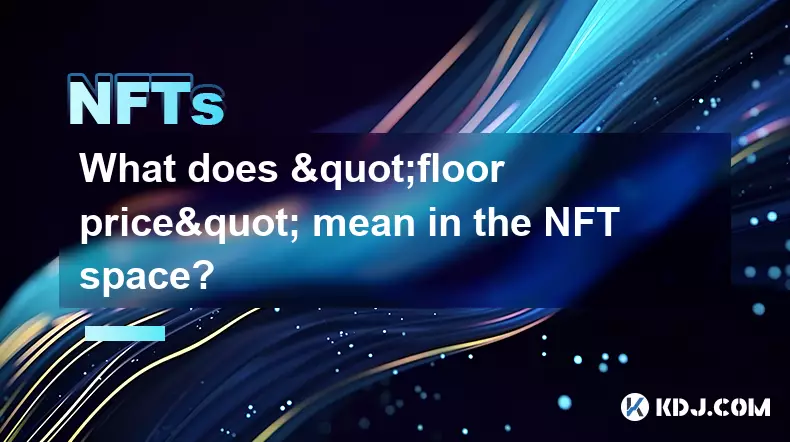-
 bitcoin
bitcoin $109667.069529 USD
-3.03% -
 ethereum
ethereum $3936.685804 USD
-4.07% -
 tether
tether $1.000493 USD
0.01% -
 xrp
xrp $2.771823 USD
-4.74% -
 bnb
bnb $957.805027 USD
-5.34% -
 solana
solana $196.735100 USD
-6.68% -
 usd-coin
usd-coin $0.999727 USD
-0.01% -
 dogecoin
dogecoin $0.227355 USD
-5.12% -
 tron
tron $0.335205 USD
-0.81% -
 cardano
cardano $0.779256 USD
-3.59% -
 ethena-usde
ethena-usde $0.999900 USD
-0.06% -
 hyperliquid
hyperliquid $42.492095 USD
-6.61% -
 chainlink
chainlink $20.501853 USD
-4.34% -
 avalanche
avalanche $28.952606 USD
-11.21% -
 stellar
stellar $0.356038 USD
-3.93%
What's the difference between NFTs and traditional collectibles?
NFTs leverage blockchain for secure, verifiable digital ownership, offering global accessibility, programmable utility, and new economic models beyond traditional collectibles.
Sep 19, 2025 at 12:55 pm

Digital Ownership and Provenance
1. NFTs are built on blockchain technology, which ensures transparent and immutable records of ownership. Every transaction is permanently recorded, allowing anyone to trace the complete history of a digital asset.
2. Traditional collectibles, such as rare coins or vintage paintings, rely on physical documentation, expert authentication, and reputation-based systems to verify legitimacy. These methods can be prone to forgery or loss over time.
3. With NFTs, ownership is cryptographically secured and globally verifiable without intermediaries. This eliminates many trust issues associated with traditional collecting markets.
4. The decentralized nature of blockchain allows for peer-to-peer transfers of NFTs across borders without relying on auction houses or certification bodies.
Liquidity and Accessibility
1. NFTs can be traded instantly on global marketplaces like OpenSea or Blur, enabling 24/7 access to buyers and sellers around the world.
2. Traditional collectibles often require in-person appraisals, listings through galleries, or participation in auctions that may occur infrequently and involve high fees.
3. Fractional ownership models enabled by blockchain allow multiple investors to own shares in a single high-value NFT, increasing liquidity options not typically available with physical items.
4. Digital scarcity combined with programmable features makes NFTs more adaptable to modern financial tools and trading strategies.
Interoperability and Utility
1. NFTs can be integrated into various digital ecosystems such as gaming platforms, virtual worlds, and decentralized applications (dApps), giving them functional uses beyond mere ownership.
2. A digital collectible NFT might serve as a wearable avatar item in a metaverse environment or grant access to exclusive content, events, or token rewards.
3. Traditional collectibles are generally static objects whose value comes solely from rarity, condition, and cultural significance.
4. Smart contracts embedded in NFTs can automatically distribute royalties to creators whenever the asset is resold, introducing new economic models absent in conventional collecting practices.
Risks and Challenges
1. While NFTs offer technological advantages, they also face risks related to wallet security, phishing attacks, and irreversible transactions if private keys are compromised.
2. The environmental impact of certain blockchains used for NFT minting has drawn criticism, though newer protocols have significantly reduced energy consumption.
3. Market volatility in the crypto space can lead to rapid price fluctuations for NFTs, sometimes disconnected from underlying utility or artistic merit.
4. Physical collectibles, while subject to damage or theft, do not depend on internet connectivity or digital infrastructure for their existence.
Frequently Asked Questions
Can an NFT be copied?Yes, the digital file associated with an NFT can be downloaded or duplicated, but the original token representing true ownership remains unique on the blockchain. Copying an image does not transfer ownership rights encoded in the NFT.
Do NFTs expire?NFTs themselves do not expire as long as the blockchain they are issued on remains active. However, the longevity of linked digital files depends on how they are stored—centralized servers may go offline, whereas IPFS-hosted content tends to persist longer.
Are all NFTs valuable?No. Like traditional art or collectibles, only a small percentage of NFTs gain significant value. Most see little to no trading activity, emphasizing the importance of research before investing.
Can I sell my NFT anywhere?You can list your NFT on any marketplace that supports its specific standard (e.g., ERC-721 or SPL). However, buyer interest varies widely across platforms, and some venues cater to niche communities or specific blockchain networks.
Disclaimer:info@kdj.com
The information provided is not trading advice. kdj.com does not assume any responsibility for any investments made based on the information provided in this article. Cryptocurrencies are highly volatile and it is highly recommended that you invest with caution after thorough research!
If you believe that the content used on this website infringes your copyright, please contact us immediately (info@kdj.com) and we will delete it promptly.
- Big Rocking Horse, Coin, and Ice Cream: An Aussie Icon's Sweet Ride
- 2025-09-26 10:45:16
- Pi Network, Price Forecast, and the Meme Market: A New York Minute
- 2025-09-26 10:25:14
- AIXA Miner: Revolutionizing Bitcoin Mining with Cloud Solutions
- 2025-09-26 10:45:16
- Mid-Cap Altcoins: Crypto Buys with Breakout Potential
- 2025-09-26 10:50:01
- BullZilla Presale: Riding the Crypto Wave in September 2025
- 2025-09-26 10:50:01
- Litecoin ETF Buzz, XRP Breakout Dreams, and BlockDAG's Deployment: Crypto's Wild West in '25
- 2025-09-26 10:50:01
Related knowledge

How can I determine the authenticity of an NFT project?
Sep 23,2025 at 05:18pm
Understanding the Project Team and Their Background1. Research the identities of the team members behind the NFT project. Verified social media profil...

What's the difference between NFTs and traditional collectibles?
Sep 19,2025 at 12:55pm
Digital Ownership and Provenance1. NFTs are built on blockchain technology, which ensures transparent and immutable records of ownership. Every transa...

How can NFTs be traded across blockchains?
Sep 19,2025 at 12:00pm
Understanding Cross-Chain NFT Trading1. Non-fungible tokens (NFTs) are digital assets that represent ownership of unique items on a blockchain. Origin...

How is NFT rarity calculated?
Sep 18,2025 at 07:54pm
Understanding NFT Rarity Metrics1. NFT rarity is determined by analyzing the uniqueness of individual traits within a collection. Each NFT typically c...

What does "floor price" mean in the NFT space?
Sep 22,2025 at 06:36am
Floor Price: A Core Metric in the NFT Marketplace1. The term floor price refers to the lowest current asking price for any item within a specific NFT ...

How do NFTs help content creators?
Sep 18,2025 at 08:00am
NFTs Empower Creators with Ownership and Monetization1. NFTs provide content creators with verifiable ownership of their digital works, ensuring authe...

How can I determine the authenticity of an NFT project?
Sep 23,2025 at 05:18pm
Understanding the Project Team and Their Background1. Research the identities of the team members behind the NFT project. Verified social media profil...

What's the difference between NFTs and traditional collectibles?
Sep 19,2025 at 12:55pm
Digital Ownership and Provenance1. NFTs are built on blockchain technology, which ensures transparent and immutable records of ownership. Every transa...

How can NFTs be traded across blockchains?
Sep 19,2025 at 12:00pm
Understanding Cross-Chain NFT Trading1. Non-fungible tokens (NFTs) are digital assets that represent ownership of unique items on a blockchain. Origin...

How is NFT rarity calculated?
Sep 18,2025 at 07:54pm
Understanding NFT Rarity Metrics1. NFT rarity is determined by analyzing the uniqueness of individual traits within a collection. Each NFT typically c...

What does "floor price" mean in the NFT space?
Sep 22,2025 at 06:36am
Floor Price: A Core Metric in the NFT Marketplace1. The term floor price refers to the lowest current asking price for any item within a specific NFT ...

How do NFTs help content creators?
Sep 18,2025 at 08:00am
NFTs Empower Creators with Ownership and Monetization1. NFTs provide content creators with verifiable ownership of their digital works, ensuring authe...
See all articles










































































